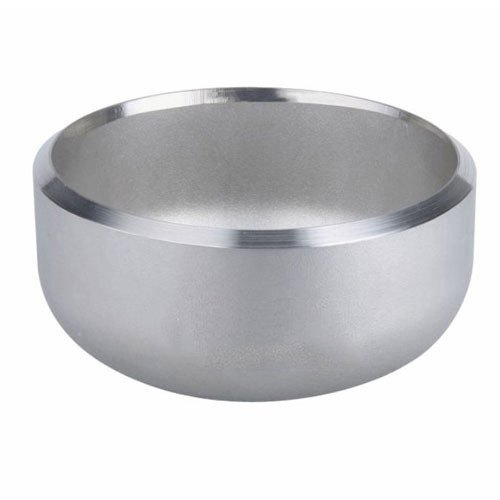-
Cangzhou Yulong Steel Co., Ltd.
-
Phone:
+86 13303177267 -
Email:
admin@ylsteelfittings.com
- English
- Arabic
- Italian
- Spanish
- Portuguese
- German
- kazakh
- Persian
- Greek
- French
- Russian
- Polish
- Thai
- Indonesian
- Vietnamese
- Zulu
- Korean
- Uzbek
- Hindi
- Serbian
- Malay
- Ukrainian
- Gujarati
- Haitian Creole
- hausa
- hawaiian
- Hebrew
- Miao
- Hungarian
- Icelandic
- igbo
- irish
- Japanese
- Javanese
- Kannada
- Khmer
- Rwandese
- Afrikaans
- Albanian
- Amharic
- Armenian
- Azerbaijani
- Basque
- Belarusian
- Bengali
- Bosnian
- Bulgarian
- Catalan
- Cebuano
- China
- China (Taiwan)
- Corsican
- Croatian
- Czech
- Danish
- Esperanto
- Estonian
- Finnish
- Frisian
- Galician
- Georgian
- Kurdish
- Kyrgyz
- Lao
- Latin
- Latvian
- Lithuanian
- Luxembourgish
- Macedonian
- Malgashi
- Malayalam
- Maltese
- Maori
- Marathi
- Mongolian
- Myanmar
- Nepali
- Norwegian
- Norwegian
- Occitan
- Pashto
- Dutch
- Punjabi
- Romanian
- Samoan
- Scottish Gaelic
- Sesotho
- Shona
- Sindhi
- Sinhala
- Slovak
- Slovenian
- Somali
- Sundanese
- Swahili
- Swedish
- Tagalog
- Tajik
- Tamil
- Tatar
- Telugu
- Turkish
- Turkmen
- Urdu
- Uighur
- Welsh
- Bantu
- Yiddish
- Yoruba

Dec . 11, 2024 09:34 Back to list
Understanding ANSI Split Flanges in Piping Applications for Improved Performance and Reliability
Understanding ANSI Split Flange Design, Application, and Benefits
The ANSI (American National Standards Institute) split flange is a vital component in various industrial applications, primarily used for piping systems. These flanges are designed to connect two sections of piping or a pipe to a piece of equipment. Their unique split design allows them to be installed easily and quickly, making them a preferred choice among engineers and maintenance personnel.
Design of ANSI Split Flange
The ANSI split flange comprises two separate halves, which are bolted together around the pipe. Unlike traditional flanges that require welding or extensive machining, the split flange can be installed without disrupting the integrity of the pipe. This facilitates maintenance and replacement, as the flanges can be removed without cutting the pipe.
Typically, an ANSI split flange is made from durable materials such as carbon steel, stainless steel, or alloyed materials to withstand high pressure and temperature. The flange’s design features enough strength to handle dynamic loads while ensuring tight seals, preventing leaks in high-pressure systems.
A distinguishing characteristic of the ANSI split flange is its ability to conform to the ANSI standard of pipe fittings. This standardization ensures compatibility with other ANSI-approved components, streamlining the design process for engineers and simplifying procurement for contractors.
Applications of ANSI Split Flange
ANSI split flanges are predominantly utilized in industries such as oil and gas, chemical processing, power generation, and water treatment. Here are some common applications
1. Oil and Gas Industry In the oil and gas sector, split flanges are crucial for connecting high-pressure pipelines. The durability and ease of maintenance facilitate the transportation of crude oil and natural gas through complex piping systems.
2. Chemical Processing The chemical industry often deals with corrosive substances. Split flanges made from corrosion-resistant materials ensure that the piping systems remain intact and operational, reducing the risk of chemical leaks.
3. Power Generation In power plants, split flanges connect various components within steam and cooling water systems. The ability to quickly assemble and disassemble these flanges minimizes downtime during maintenance and repairs.
ansi split flange

4. Water Treatment Split flanges play a fundamental role in water treatment facilities, where they connect large diameter pipes that transport water for treatment processes. Their reliable sealing properties help maintain water quality and prevent contamination.
Benefits of Using ANSI Split Flange
The use of ANSI split flanges presents several advantages that make them favorable in various applications. Here are some key benefits
- Ease of Installation The split design allows for quick installation, saving time and reducing labor costs. No welding means that installation can sometimes be performed in remote locations where welding equipment is unavailable.
- Reduced Downtime Maintenance and repairs can be done swiftly without extensive disassembly of piping systems. This significantly minimizes operational downtime, which is crucial for businesses that rely on continuous processes.
- Versatility Split flanges can accommodate various pipe sizes and types, making them versatile components in a wide range of projects. Their adaptability allows for optimization in design and installation.
- Cost-Effectiveness The reduced need for welding and the ease of installation translate to lower overall project costs. Less labor and fewer materials mean companies can realize substantial savings.
- Leak Prevention The engineering behind ANSI split flanges ensures a tight seal that reduces the risk of leaks. This contributes to safety and environmental protection, especially in industries handling hazardous materials.
Conclusion
ANSI split flanges are a crucial component in modern industrial applications due to their innovative design and significant advantages. Their ease of installation, reduced downtime, versatility, cost-effectiveness, and ability to prevent leaks make them a popular choice across various sectors, including oil and gas, chemical processing, power generation, and water treatment. Understanding the functionality and benefits of ANSI split flanges not only aids engineers and maintenance personnel in their daily operations but also enhances safety and efficiency in critical infrastructure. As industries continue to evolve, the role of ANSI split flanges will likely remain indispensable, ensuring reliable connections in complex piping systems.
Latest news
-
ANSI 150P SS304 SO FLANGE
NewsFeb.14,2025
-
ASTM A333GR6 STEEL PIPE
NewsJan.20,2025
-
ANSI B16.5 WELDING NECK FLANGE
NewsJan.15,2026
-
ANSI B16.5 SLIP-ON FLANGE
NewsApr.19,2024
-
SABS 1123 FLANGE
NewsJan.15,2025
-
DIN86044 PLATE FLANGE
NewsApr.19,2024
-
DIN2527 BLIND FLANGE
NewsApr.12,2024
-
JIS B2311 Butt-Welding Fittings LR/SR 45°/90° /180°Seamless/Weld
NewsApr.23,2024











